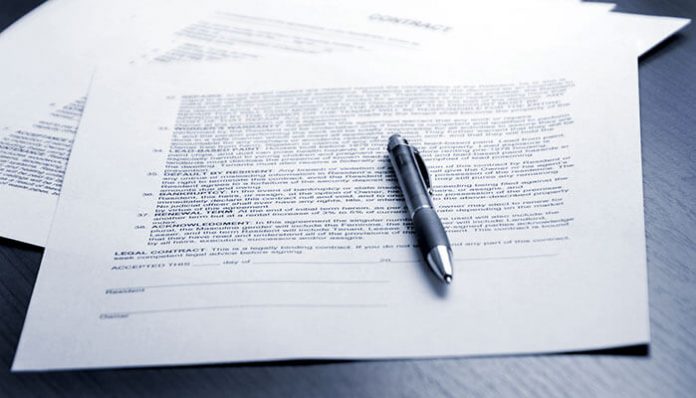This article has been written by Siri K Reddy.
Introduction
An insurance policy is a contract between the policyholder and the insurer. It determines the claims which the insurer is legally bound to pay. An insurance contract includes all forms associated with the agreement between the insured and the insurer. There are many parts of an insurance contract, such as declarations, definitions, insuring agreement, exclusions, conditions, policy forms, endorsements, jackets, etc. The primary purpose of an insurance contract is to remain in the same financial position as a particular person was previously.
Features on insurance contract
As said earlier, an insurance contract is a contract in which the insurer promises to pay benefits to the insured or to a third party if events are foreseen:
- Insurance contracts are usually accepted as contracts of adhesion because the insurer draws the contract and the insured has little or no ability at all to make any materialistic changes. This is deciphered to imply that the safety net provider bears the weight if there is any uncertainty in any terms of the agreement. Protection approaches are sold without the policyholder, in any event, seeing a duplicate of the agreement.
- Insurance contracts are aleatory in that the sums traded by the safeguarded and the guarantor are inconsistent and rely on dubious future occasions.
- Insurance contracts or policy contracts are unilateral, meaning that only the insurer promises legally in the contract. The insured need not pay the premiums, but the insurer is required to pay the benefits mentioned under the contracts if the insured has paid the premiums and met other primary provisions.
- Insurance contracts are administered by the rule of most extreme great confidence (uberrima fides), which requires the two players of the protection agreement to bargain in compliance with common decency.
Parts of an insurance contract
- Declarations: The declarations in the insurance contract help in the identification of who actually the insured is, the insured’s address, the policy term, risks and property covered, policy limits, deductibles if any, the policy number, premium amount and the insuring company. These are the things that the insured is expected to fill in the form that would be attached in the first few pages of the policy.
- Definitions: It helps in giving a proper understanding of the terms used in the rest of the policy.
- Insuring agreement: This agreement includes the risks assumed, the perils or the nature of coverage. The insurance company uses this platform to express all the promises to compensate the insured.
- Exclusions: The coverage is taken away from the insuring agreement by explaining the property, hazards, perils or the losses that will arise from the causes that are not under the policy.
- Conditions: Conditions are nothing but the rules of behaviour or conduct, provisions and the obligations that the insured should obey. The insurer has the right to deny a particular claim if the policy conditions aren’t met.
- Endorsements: An endorsement is a form of public approval that is given either to the politicians or a particular product. Non-lawyers may find it hard to understand the policies. Usually, non-lawyers are not given the chance to rewrite and policy as underwriters or for modification.
- Policy form: A policy form is a single entity comprising the definitions, exclusions and insuring agreements. It is also called a coverage form.
Essentials of the insurance contract
- Offer and acceptance: A proposal form is given to the person when applying for insurance in a particular insurance company. The form is later sent to the company after filling in all the required details that are asked for. At times even the premium check is sent along with the proposal form. This entire process is called an offer. Whereas on the other hand, acceptance takes place when the insurance company agrees to insure the person.
- Consideration: Considerations are the future premiums that the insurer is bound to pay to the insurance company.
- Legal capacity: In order to enter into an agreement with an insurer, one has to have a sound legal mind. If a person is ill, he may not be qualified enough to make contracts.
- Legal purpose: If the actual reason for the contract is found to be illegal, then it is considered invalid.
Endorsements
The endorsement is simple terms means the signing at the back of an instrument for the purpose of negotiation. The act of signing a cheese, in order to transfer to someone else is called endorsement of the cheque. The endorsement is generally made at the back of the cheque, in case there is no space left on the cheque, the endorsement is made on a separate slip to be attached to the cheque.
Essentials of endorsement
- The endorsement has to be made on the instrument itself. In case there is no space left then the endorsement can be made on a separate slip of paper an attached to the instrument.
- The endorsement has to contain an order to pay. Complementary prefixes and suffixes need not be contained.
- An endorsement may be made by the endorser either by his signature or by mentioning his name on the instrument or by additionally mentioning to his signature on the person to whom on to whose order the instrument is paid to.
- The endorsement should be finished by the conveyance of ownership of the instrument. The conveyance of ownership of the instrument with the aim of passing the property to the endorsee is significant.
Types of endorsement
- General endorsement: In this type of endorsement the endorser just signs on the back of the instrument without specifying the name of the person to whom the endorsement is made.
- Full or special endorsement: In this type of endorsement, both the signature of the endorser and the name of the person to whom the endorsement is made is being mentioned. Hence this is called a full endorsement.
- Partial endorsement: An endorsement is said to be partial if the endorser purports to transfer to the endorsee only a part of the amount payable. In simple terms, an endorsement that allows transferring to the endorsee a part of the amount payable is known as a partial endorsement.
- Restrictive endorsement: A restrictive endorsement is one that limits the use of a financial instrument. In simple terms, a restrictive endorsement is to place a constraint on the cheque.
- Conditional or Qualified endorsement: A conditional endorsement is the one in which the endorsee puts a barrier to all his liabilities and puts conditions on the instrument. On the other hand, a conditional endorsement that doesn’t affect the flexibility of the instrument sometimes is also called a qualified endorsement.
Policy lapse
When the benefits mentioned in the policy are terminated due to nonpayment of the premium amount on the mandated due dates or even after the grace period is known as a lapsed policy. The lapse rate is the rate at which the life insurance policy ends or terminates when the premium amount is not paid on the due date.
Reasons for policy lapsation
- High premium rate.
- The financial burden on the policyholder.
- When poor customer service is provided.
- Mis-selling of the products.
- Postpone in renewal notice.
- Increase in complaints by the present policyholders.
- Lack of transparency in the process or procedures.
- Agent force to cancel existing policy and make to purchase another new policy.
- Wrong prospecting of customers.
- Long term payment.
Renewal
Renewal premiums are those premiums that are paid to the insurer by the insured in order to keep the policy alive and to avail all the benefits. If the insured fails to pay the policy premiums on time or during the grace period, then the policy lapses and he or she is no longer entitled to vail all the benefits.
Procedure to be followed for a car insurance renewal:
- Comparison of services provided by various insurance companies: The first and the most important step is to compare and shortlist a few insurance companies based on the kind of service they provide and the charges.
- Select the type of insurance: One has to select the types of insurance they want. The two types of a car insurance policy are the comprehensive car insurance policy and the third-party car insurance policy.
- Fill in the details needed: An issued form by the insurance company has to be filled.
- Select Add-ons for the insurance: The add-ons facility consists of zero depreciation, roadside assistance, return to invoice, engine protection, etc.
- Choose payment: This is the last step in the renewal process. As soon as the payment is completed, the insurer will receive his or her renewed policy through the mail.
Conclusion
The concept of policy renewal, endorsements and policy lapsation are all interconnected. If the insurer wants to pay another person through cheque, then he is bound to put his signature on the cheque which is called the endorsement. Once the due date is completed and yet the insurer hasn’t paid the policy premium, then the policy gets lapsed. The lapsed policy can further get renewed. Hence all the concepts are interconnected.
References
- Mowbray, Albert H- Insurance: Its Theory and Practice
- Wollner KS- How to draft and Interpret Insurance Policies
- Friedman, Hershey and Linda Friedman- Endorser Effectiveness by Product Type
- Harsh Walia- Lapsation of an insurance policy and its implications
- Jogendra Kumar- Lapsation of a life insurance policy
- Rajagopalan V- Lapsation of life insurance policy
LawSikho has created a telegram group for exchanging legal knowledge, referrals and various opportunities. You can click on this link and join:
 Serato DJ Crack 2025Serato DJ PRO Crack
Serato DJ Crack 2025Serato DJ PRO Crack










 Allow notifications
Allow notifications



